Rock Up!
A day of conversations at St Mary's Lighthouse, Whitley Bay.
17th September 2022
Rock Up! is a Rocky Climates network project hosted and commissioned by Arthouses
Rocky Climates artists research collective invited people to join them in a series of participatory conversations with rocks at St Marys lighthouse Whitley Bay. Taking place during low tide, these rocky meetings explored ideas and stories that emerge from the rocky foreshore that separates the tidal island of St Mary’s from the mainland.
The day created encounters with the less-noticed aspects of this rocky environment, through story-telling, touch, lens, sound and speculation. Some conversations took place out on the rocks, some in the meeting room at the lighthouse. Each conversation was streamed into the lighthouse via Zoom and out to remote participants, bringing together a dispersed rocky community.
Rocky Climates artists contributing to this event include Ellie Barrett, Rebecca Birch, Sarah Casey, Simone Kenyon, Paula Kolar, Dominic Smith, Jen Southern and during the day we were accompanied by geologist Livi Adu.
My conversation with rocks focussed on limpets, and how we might think of them as translators between us and rocks. Limpets live as close to rock as they can get, and over time they grind into the rock making a 'homescar' and altering their shell in order to make a seal so that no water escapes at low tide. This means that they are almost perfectly adapted to a constantly changing environment that can cycle from hot and dry to cold and wet twice a day with the tides. This homescar can sometimes be seen on the rock as a round mark or indent, and over time when the limpet has died, they seem to erode further to create small cups in the rock that are reminiscent of rock graves that once held the fleshiness of human bodies at Heysham and Whitby.
Shells become rock. On the beach at St Mary's we found fossils of shells within stone made from sedimented sand that includes ground up shells. Limpet shells are made from calcium carbonate in the water, and sometimes become the same colour as the rock. Their mouth parts - the radular - is the hardest bio-material that scientists have found, harder than the rock that it wears into. When the tide is in the limpets roam around the rock using the radular to scrape algae off the surface, gradually eroding the surface, as small rocky sculptors. They leave a slime trail, and follow it back to their homescar as the tide falls, in order to clamp down again before they are exposed to the air.
I invited participants to find a limpet shell, and scoop up some clay, and then stick it to the rock and move it in emulation of the limpets roaming movements, and to think about the limpet becoming rock and rock becoming limpet as their surfaces mould to one another.
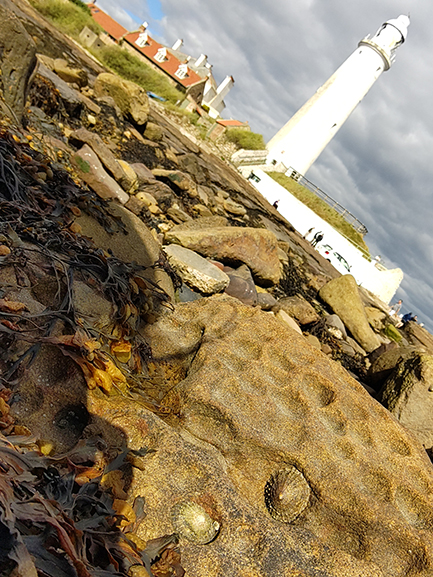

Talking with limpets on the beach and zoom

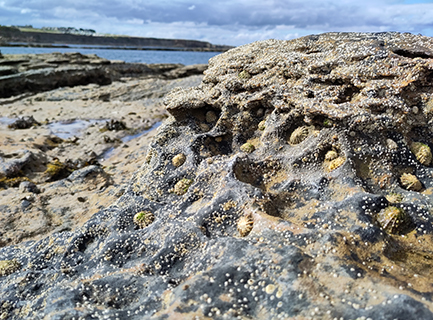
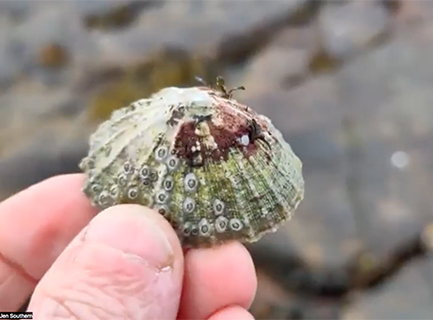
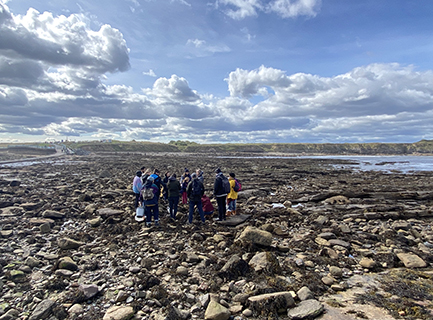
Homescars, fossils, limpets
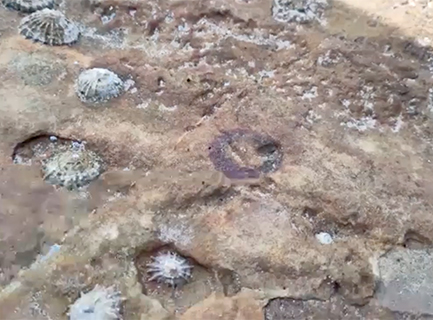

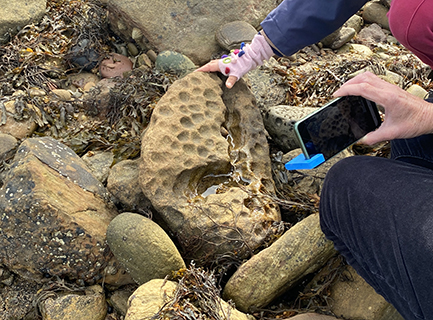
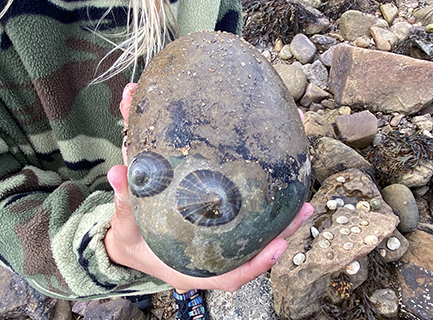
Participants making clay limpets and trails
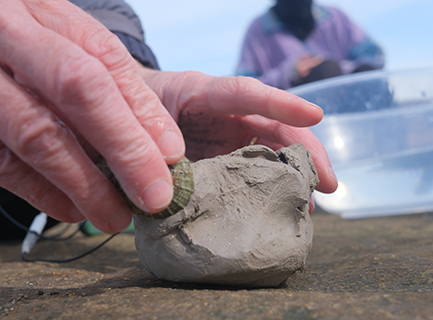
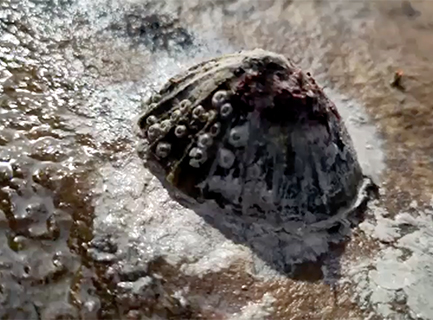
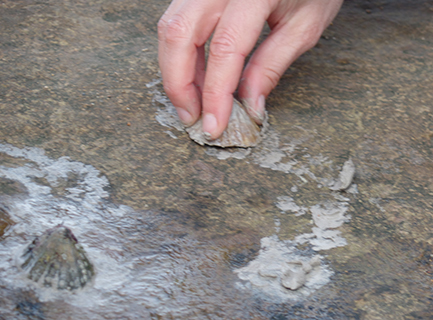
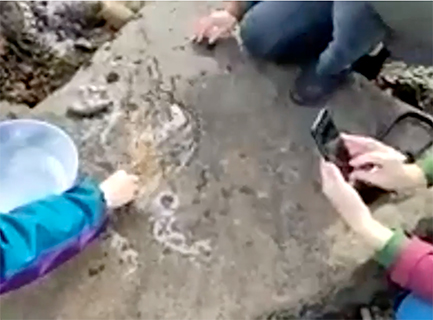
Zoom feed streamed into the lighthouse and online
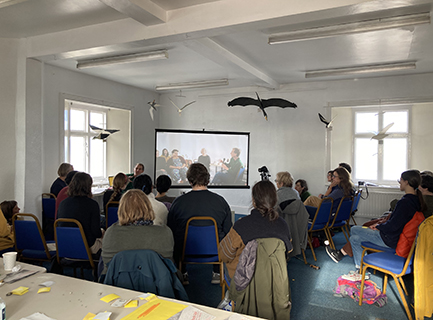
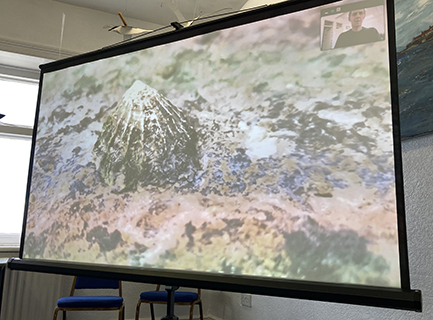
Riso printed schedule and ways to start a rocky conversation
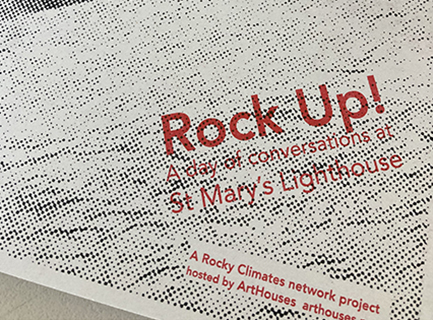
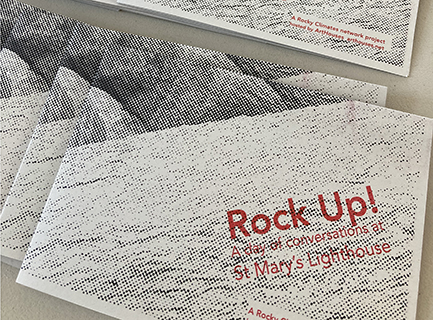
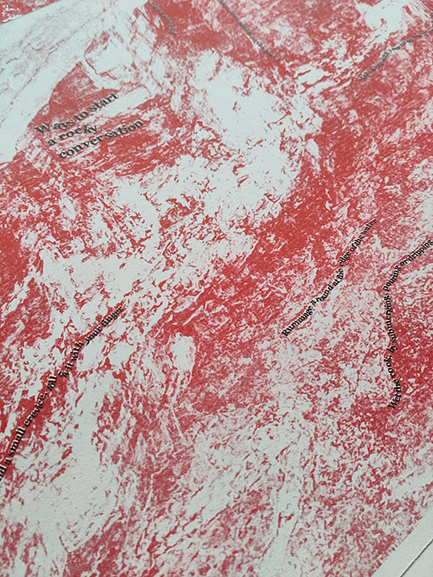
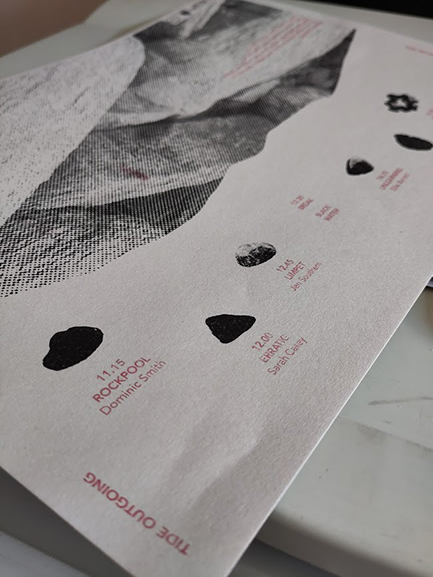


![]()
